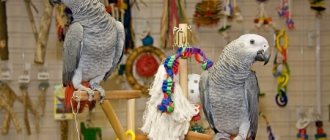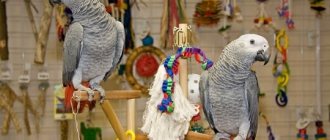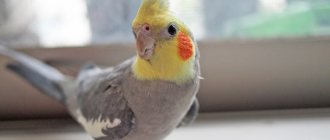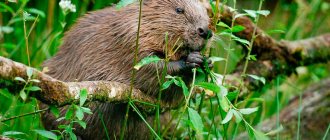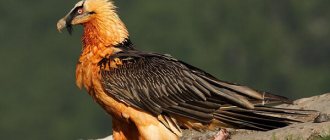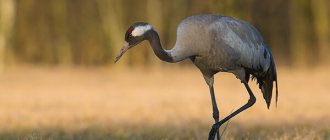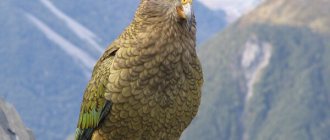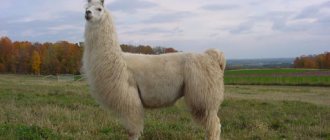- Wild animals
- >>
- Birds
The kakapo is a unique parrot, one of a kind. It has attracted the attention of naturalists and animal activists because it is on the verge of extinction. Kakapos are interesting because they willingly make contact with humans and behave very friendly, relative to many other wild birds. Let's figure out why this parrot is unique.
Origin of the species and description
Photo: Kakapo
Kakapo is a rare parrot that belongs to the Nestoridae family. The peculiarity of Nesteridae is that they live only in New Zealand and include a fixed number of representatives that are in danger of extinction:
- kea;
- South Island and North Island kaka;
- Norfolk kaka, a completely extinct species. The last bird died at the London Home Zoo in 1851;
- the kakapo, which is also on the verge of extinction;
- Chatham Kaka - According to scientists, this species became extinct around the 1700s. His appearance is unknown, since only his remains were captured.
The Nesterov family are very ancient birds, whose closest ancestors lived on Earth for 16 million years. The reason for the sudden extinction was the development of New Zealand lands: the birds were caught as trophies, and they were hunted for sport. The destruction of their natural habitat also affected their numbers.
It is difficult for the Nesterov family to take root anywhere outside the territory of New Zealand, so breeding them in nature reserves is very problematic. They received their names from the Maori tribes - the indigenous people of New Zealand. The word "kaka", according to their language, means "parrot", and "po" means night. Therefore, kakapo literally means “night parrot,” which is consistent with its nocturnal lifestyle.
Appearance and features
Photo: Kakapo parrot
Kakapo is a large parrot, whose body length reaches approximately 60 cm. The parrot weighs from 2 to 4 kg. The plumage is predominantly dark green interspersed with dark yellow and black - this color provides the bird with camouflage in the jungle. On the head of the kakapo, the feathers are predominantly white and elongated - thanks to their shape, the bird becomes more sensitive to nearby sounds.
Video: Kakapo
The kakapo has a large gray curved beak, a short thick tail, short massive legs with large toes - it is adapted for fast running and jumping over small obstacles. The bird does not use its wings for flight - it has lost the ability to fly, preferring to run, so the wings have shortened and began to serve as a balance maintainer when the bird climbs to higher ground.
Fun Fact: Due to their white facial disc, these parrots are also called "owl parrots" because the disc is similar to that of most owl species.
Due to the loss of the ability to fly, the skeleton of the kakapo differs in structure from the skeletons of other parrots, including those from the Nesterov family. They have a small sternum with a low keel, which is slightly shortened and appears underdeveloped. The pelvis is wide - this allows the kakapo to move effectively on the ground. The leg bones are long and strong; The wing bones are short, but also compacted, compared to the bones of other parrots.
Males, as a rule, are larger than females, but have no other differences from each other. The voice of male and female kakapo is hoarse, croaking - males scream much more often and their sounds are usually louder. During the mating season, such “singing” can turn into an unpleasant squeal. But in most cases, kakapo are silent and calm birds that prefer a secretive lifestyle.
Interesting fact: Kakapo have a strong smell, but their scent is quite pleasant - reminiscent of honey, beeswax and flowers.
Where does the kakapo live?
Photo: Kakapo in nature
Kakapo can only be found among the islands of New Zealand. Most individuals survive in the southwest of the South Island. The kakapo lives in the tropics because its color is adapted to camouflage among dense green forests. It is difficult for humans to find kākāpō because they are adept at hiding in bushes and tall grass.
The kakapo is the only parrot that digs holes. Both males and females have their own burrows, which they dig with massive, strong paws. Tropical soil is damp, but even in rare periods of drought, the parrot will have no difficulty in raking the dry soil with its claws.
Interesting fact: Despite the fact that the kakapo's paws are very strong, with strong claws, the kakapo is a very peaceful bird that does not know how to defend itself or attack.
For kakapo burrows, they choose tree roots or holes in bushes. The more secluded the place, the better, because the kakapo hides in its burrows during the day. Due to the fact that during the night a bird can walk several kilometers in search of food, it does not always have time to return to the hole from which it came out during the day. Therefore, one kakapo individual usually has several burrows.
Kakapo arrange their burrows with great care: dry branches, blades of grass and leaves are dragged there. The bird prudently digs two entrances to the hole so that, in case of danger, it can escape, which is why kakapo holes are often short tunnels. Females often set up their own bedroom for their chicks, but sometimes even without chicks, the kakapo digs out two “rooms” in the burrow.
Kakapo find it difficult to take root anywhere other than the islands of New Zealand. This is largely due to the flowering of certain plants, which stimulate the beginning of their mating season.
Not a cage - an aviary
Locked up in a cramped room, the kakapo becomes sad and sick, but in the spacious enclosure of the state reserve it feels great. Will a private owner be able to arrange everything so that the relief and landscape almost completely replicate the natural ones? Even if he has the power to do this, it is strictly prohibited.
It must be remembered that the parrot’s natural habitat is remote areas with trees and bushes, where with its powerful paws it digs huge branched holes with a separate bedroom with two entrances. It is clear that a cage in an apartment is not for such a pet.
Aviary for a kakapo parrot
What does kakapo eat?
Photo: Kakapo from the Red Book
Kakapo are exclusively herbivorous birds. The dacridium tree and its fruits are the favorite food of the kakapo. For the sake of fruits, birds are ready to climb to the tops of trees, using their strong legs and occasionally flying from branch to branch.
Interesting fact: Kakapo mating season often coincides with the flowering of dacrydium. Perhaps this is the reason for the unsuccessful breeding of birds in captivity.
In addition to tree fruits, kakapos enjoy:
- berries;
- fruits;
- flower pollen;
- soft parts of grass;
- mushrooms;
- nuts;
- moss;
- soft roots.
Birds prefer soft food, although their beaks are adapted to grinding hard fibers. They usually soften any fruit or herb with their beak to a mushy state, and then eat it with pleasure.
After the kakapo has eaten some plants or fruits, fibrous lumps remain on the remains of food - these are the places that the parrot chewed with its beak. It is from them that you can understand that a kakapo lives somewhere nearby. In captivity, the parrot is fed sweet foods made from pressed vegetables, fruits, nuts and herbs. Birds quickly get fat and reproduce readily when they are well fed.
Now you know what the kakapo owl parrot eats. Let's see how he lives in the wild.
Can I keep it at home?
The kakapo night parrot attracts people with its unusual appearance and habits. Naturalists note his courage and gullibility. Even in the forest, having noticed a person, a curious bird calmly approaches him, climbs onto his back, and allows him to pull himself together. In captivity it takes root well and easily tolerates captivity. The free sale of owl parrots, or kakapos, is prohibited. They cannot be taken out of their native territory, nor should they be kept locked in apartments.
The character of the kakapo is reminiscent of a dog: it is just as good-natured and humble, and easily becomes attached to a person. People don't know as much about them as they do about other parrots, but these birds are worthy of attention and care. Thanks to the efforts of volunteers and ornithologists, the number of owl parrots is gradually increasing.
Features of character and lifestyle
Photo: Kakapo bird
Kakapo prefer to live away from each other, although their territories often overlap - even males are not aggressive towards other males. They are nocturnal birds, emerging from their burrows in the evening and spending the entire night searching for food.
Kakapo are kind and sociable birds. They acquired this character during evolution, since they almost never encountered natural predators in their habitat. They are ready to make contact and are not afraid of people; Kakapo have recently been discovered to be playful and affectionate. They can become attached to humans, love to be petted and are ready to beg for treats. It is not uncommon for male kakapo to perform mating dances in front of zookeepers or naturalists.
Interesting fact: Kakapo are long-lived parrots - they can live up to 90 years.
Birds are not adapted for active flight, but their wings allow them to jump to great heights and climb trees and other heights. In addition, sharp claws and strong paws make them good climbers. They descend from a height with their wings outstretched - this allows them to land softly on the ground.
The only self-defense that kakapo have mastered is camouflage and complete freezing. Realizing that an enemy is nearby, the bird suddenly freezes and remains motionless until the danger moves away. Some predators and people do not notice kakapos if they remain motionless, as their color makes them blend into their surroundings.
In general, the bird travels about 8 kilometers during the night. As a rule, they move slowly, waddling from side to side. But kakapo also run quickly and deftly jump over obstacles thanks to their developed paws.
Nutrition
The basis of the bird's diet is mainly plant food, which is rich in tropical forests. More than 25 species of tropical plants are considered suitable for poultry food. However, the most favorite delicacies are pollen, young plant roots, young grass, and some types of mushrooms. He does not disdain moss, ferns, seeds of various plants, and nuts.
The parrot selects young soft shoots of bushes, pieces of which can be broken off with the help of a fairly well-developed beak. However, despite its almost entirely plant-based diet, the bird is not averse to eating small lizards that come into its field of vision from time to time. If a bird is in captivity, for example, in a zoo, it loves to be treated to something sweet.
Social structure and reproduction
Photo: Kakapo chicks
Like capercaillie, male kakapo begin to show - making dull sounds similar to rumbling. This sound can be heard several kilometers away, which attracts females. Females go in search of a mating male, and are able to travel long distances to find him.
The male makes sounds that attract females using a special throat pouch. In order for the sound to spread as far as possible, it climbs to high places - hills, stumps, trees. Under these hills, the male digs a hole into which he descends every night until he finds a female waiting there. Sometimes, instead of a female, there is a male, which causes small fights between the parrots, which end with the flight of one of the kakapo.
Having found a hole, the female sits in it and waits for the male to come down to her. At this time, she may make a shrill cry that attracts his attention. In general, male mating lasts about three or four months, which is a record among animal mating rituals. If the female finds the male large enough and his plumage attractive and bright, she will agree to mate.
The male strives to impress the female: having descended into the hole, he performs ritual dances, which include turning in place, stomping, grunting and flapping his wings. The female, having made a decision about the male, goes to the nearest place suitable for the nest. The male does not stop displaying at this time - he returns to his height and continues to call for females.
After the female kakapo has built a nest, she returns to the male she likes to mate and then goes back to the nest. From January to March, she lays her eggs in a hole dug inside rotten trees and rotten stumps. In such a nest, two entrances are required, which form a tunnel. The female incubates two white eggs for about a month, after which chicks appear, covered with white down.
The chicks remain with their mother for a year until they grow and become stronger. The female always remains near the nest and reacts to the slightest squeak of the chicks. If they are in danger, the female covers them with her body and takes on a terrifying appearance, trying to “swell” to a large size. By the age of five, kakapo themselves become capable of reproducing.
Natural enemies of kakapo
Photo: Kakapo parrot
For thousands of years, kakapo had no natural enemies, and the population was maintained thanks to the rare breeding of these birds. But with the arrival of European colonialists, much changed - they brought predators to the islands of New Zealand, which began to rapidly reduce the bird population. Camouflage and “freezing” were the only defense mechanisms that the kakapo possessed.
Predators that have decimated the parrot population:
- cats;
- stoats;
- dogs;
- rats - they ravaged kakapo nests and killed chicks.
Cats and stoats smelled birds, so camouflage did not save the parrots. By 1999, mainly due to introduced predators, only 26 females and 36 males of these parrots remained on the islands.
Diet of birds
According to research conducted in 1984, these large endemic parrots from New Zealand feed on 25 species of diverse plants. They are partial to ripe fruits, berries and the bark of young trees. The fruits of a plant called rimu by Maori deserve special love from birds. If there are enough of them, birds are ready to eat them all season.
The owl parrot follows a characteristic diet. Each season it feeds on certain plants. This diet allows you to get the vitamins necessary for development and not destroy endemic plants. Birds do not consume animal or human food.
Population and species status
Photo: Kakapo in New Zealand
Kakapo is listed in the Red Book because these parrots are on the verge of extinction - there are only 150 individuals left, although not so long ago the islands of New Zealand were densely populated with them. Before the development of the islands by Europeans, parrots were not in danger of extinction. The Maori, the indigenous people of New Zealand, hunted these birds, but treated them with respect, and the caution and speed of the kakapo allowed them to escape from any pursuer.
Before the arrival of Europeans, the kakapo were exposed to another threat from the developing Maori - deforestation. With the development of new means of land cultivation, people began to cut down forests for sowing sweet potatoes, which affected the parrot population.
But scientists identify the main reasons why their population began to fall critically:
- the appearance of Europeans. They started active hunting for exotic birds. Kakapo meat was popular, as were the birds themselves as live trophies, which were subsequently sold for settling in houses. Of course, without proper care and the opportunity to reproduce, the kakapo died;
- Along with Europeans, predators arrived on the islands - rats, dogs, cats, martens. All of them significantly reduced the population of kakapo, which could not hide from the agile nocturnal predators;
- rare reproduction. Numerous rituals that occur extremely rarely do not contribute to population growth. Sometimes the kakapo breeding season does not occur even once a year, which critically affects the number of bird individuals.
Communication with brothers
The owl parrot prefers loneliness in its own territory. Meetings with relatives occur no more than once every two years. Among the characteristic features of these birds is the smell that the male produces. The very strong aroma of honey and fruit attracts girlfriends to it.
Read also
Waka food for parrots reviews
Kakapo erects a real architectural structure: on a selected elevation he digs a bowl-shaped hole, sits in it and loudly calls out to his chosen one. The sound intensifies as the pothole deepens. He has several such “bowls”, and he walks around them in turn every night for eight hours. He's even losing weight. Loses up to half of its weight. The mating season lasts for three whole months. The girls come running one after another to hear the beautiful song and sweet smell of the male.
https://www.youtube.com/watch?v=mfbTz1DrOZI
